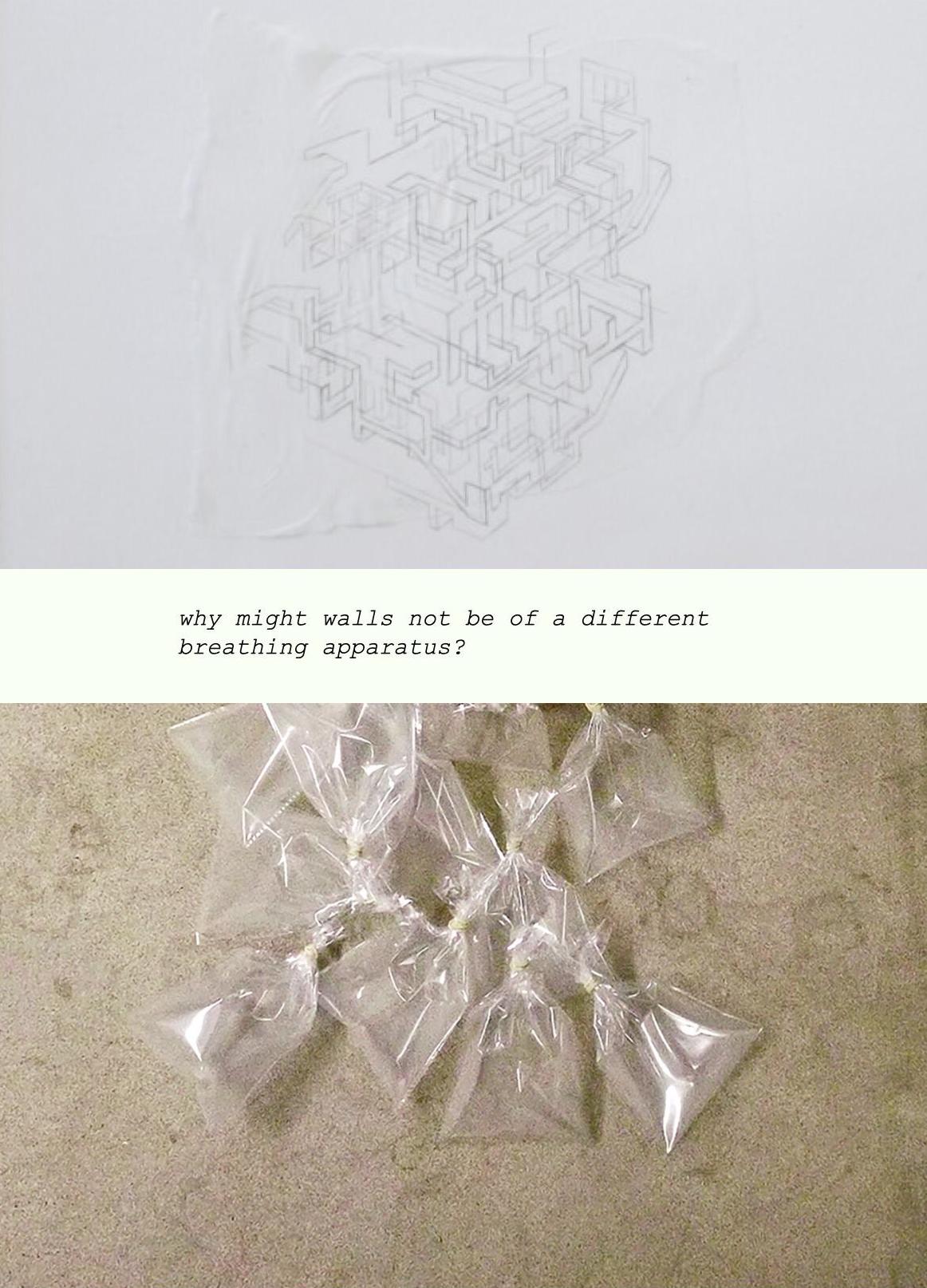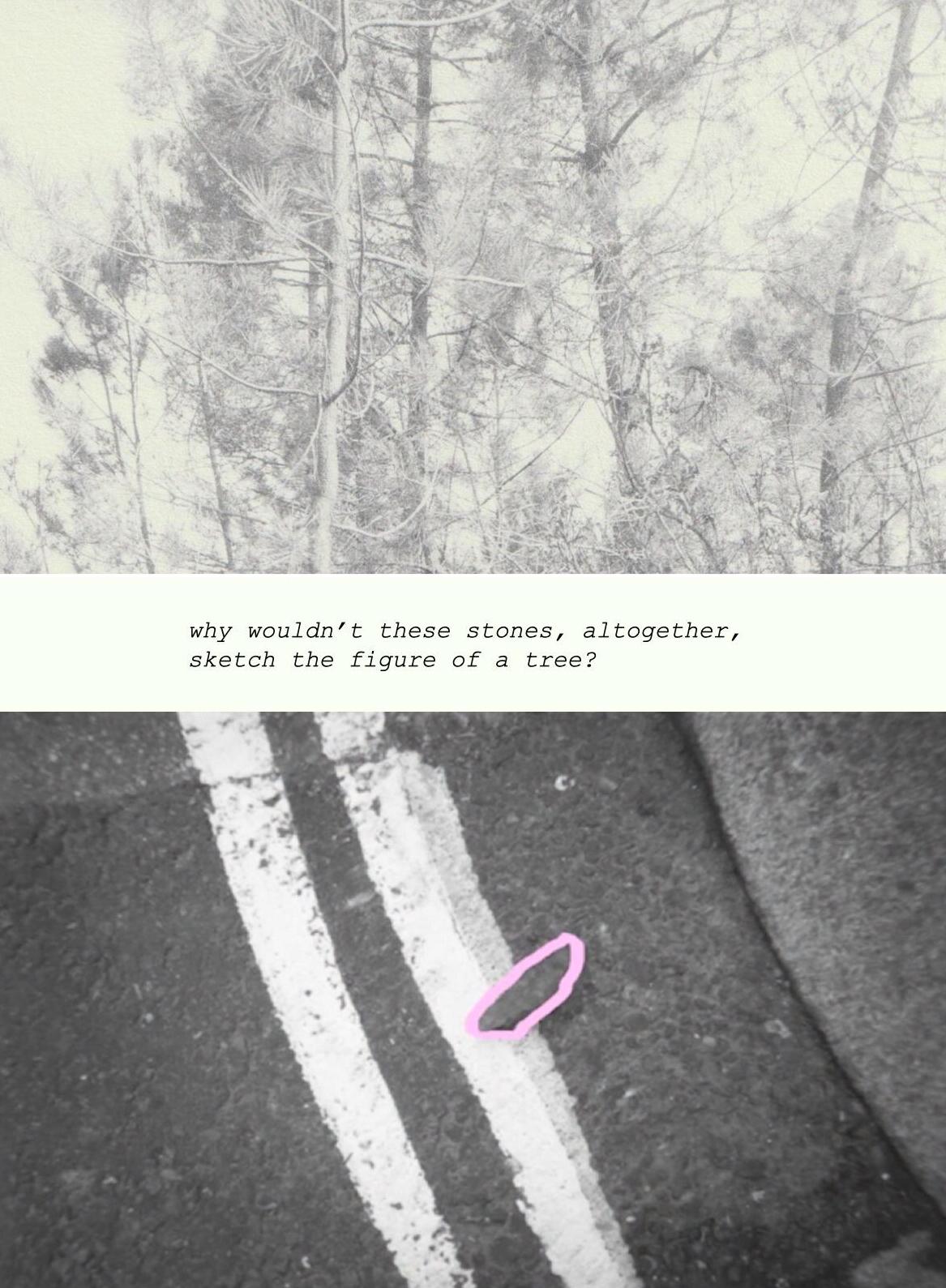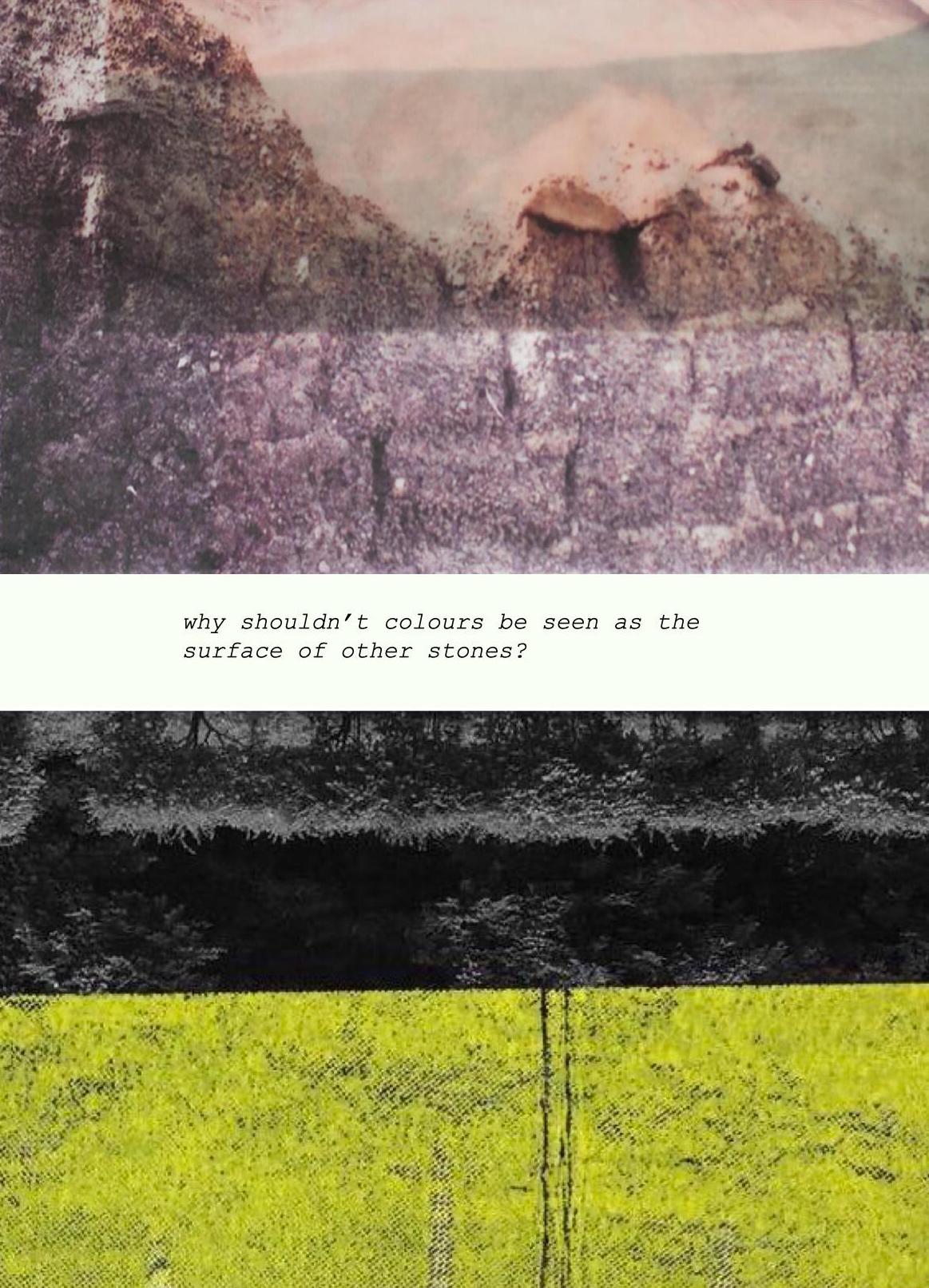A BODY BIGGER THAN A MAP
Inês Brites | Carolina Lino | Seungjun Lee | Laia Giol Carreño | Jia Tang | Luísa Telles
27.04.20 - 17.05.20
Exhibition: ︎



PT / EN
Could one think of confinement as though it were an eye? Just as a glimpse, let’s say, following the pedestrian who goes around the corner. Where do cities lead to? Otherness holds beyond a limit which might only be desirable, just like a volume of uncompleted vision: spreading, surrounding objects with rhythm; displaying sight and body in a horizon where both are possible. And here one could gaze at the traces of somewhere else.
Though just a possibility. Why shouldn’t one think of the city as a glimpse, a whisper, maybe a clue? At night, for instance, seen from above. Long geometrical figures, their size uncertain, only shape, blurry lines on a black canvas. Or during the daytime, amidst. Tall façades razing the skies, sealed in every window, the backyards only whispered by the traffic. And also in the garbage, hope, billboards. In every case numerous hands. And yet a silhouette. Mirror, repetition, pictures, but a silhouette. Always a silhouette. Thus the city has a torso, a forehead, a nape. Desired loudly by a thousand voices, continuous and always new. Even if it may never come to be. If it may have never existed.
The virtual exhibition at EGEU presents three series of artists, each bringing forward the extension of a body bigger than a map, be it as a space of imagination or the imagination of a space. Inês Brites - Carolina Lino (why wouldn’t these stones, altogether, sketch the figure of a tree?); Jun - Laia Giol (why might walls not be of a different breathing apparatus?); Jia Tang - Luísa Telles (why shouldn’t colours be seen as the surface of other stones?). Although the same place still.
Every kind of length entails a future. And future is also a desire, as desire is a gaze. Hence one might not think of it as a different hour, as if torn apart from an undocumented past. Inasmuch as the past is also a desire, it ought to be seen as a sense of future. Both might be eyelids of the same indecipherable face. No dichotomy whatsoever, no need to choose between a body holding the image of a big, never-to-be-born tomorrow, or another body, a different one. We might only think of its body as an eye. Neither the body of desire nor a body desiring are illusive: deceit always arises in flesh and bone.
A. Lenz
